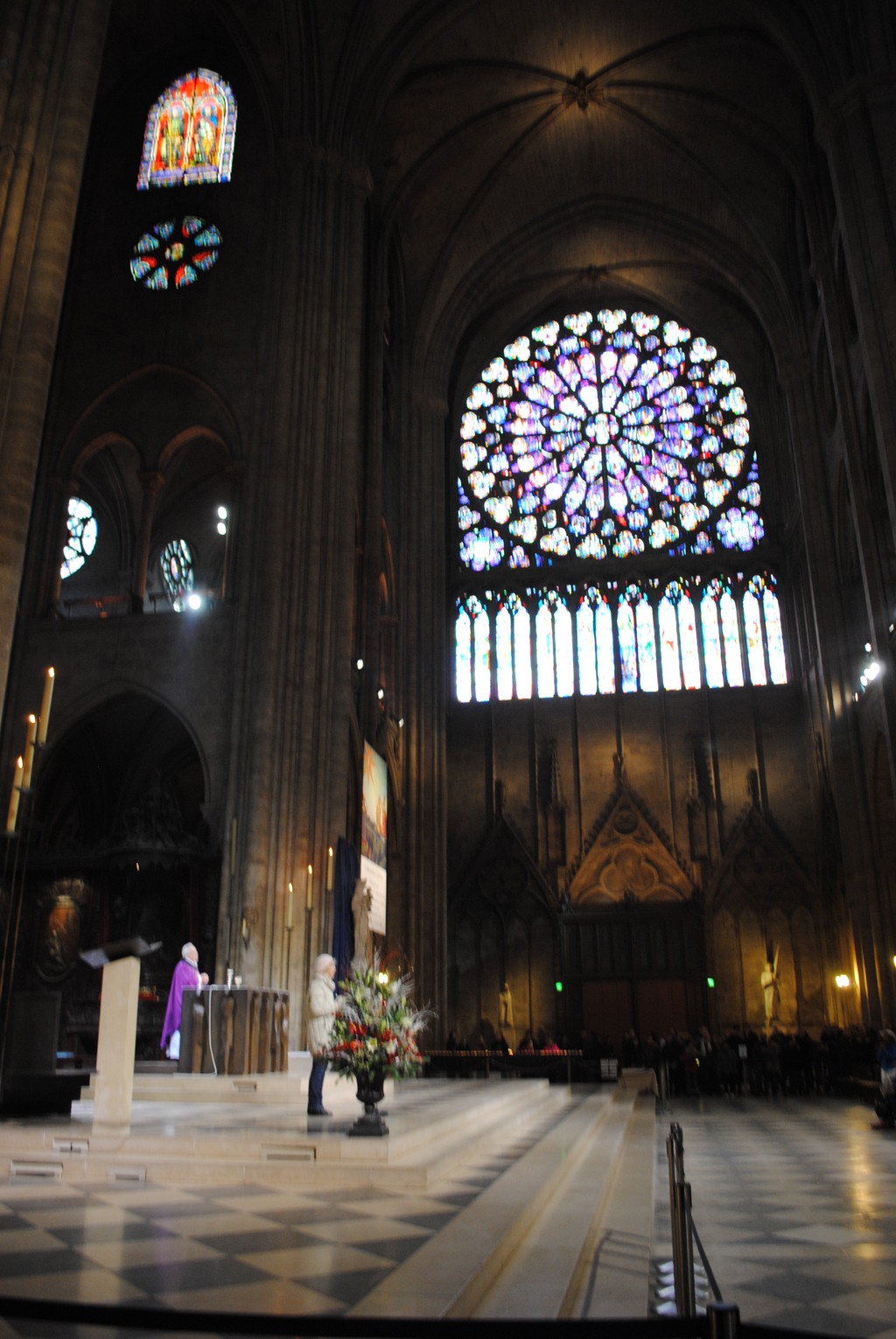The legendary Notre-Dame de Paris
The legendary Notre-Dame de Paris, sung by Victor Hugo in the novel of the same name, is located in the 4th district of the French capital, in the eastern part of the island of Cité.It is the geographical centre of not only Paris, but all of France. There are always a lot of people here, mostly tourists and youth in the evenings, and nothing resembles the gloomy Paris described by Hugo.
Of course, the meeting with this place was eagerly awaited. Who did not read Notre-Dame de Paris Hugo or at least did not watch the film? In general, everyone knows that two massive heads of the main cathedral of France, sitting on the side naves of the gargoyle guarding the prey, the rose above the entrance is the main symbol of Paris, and the island of Cité where the temple is located is generally the place from which "there is a French land". So I approached the temple with mental trembling. Of course, in part my anticipations were justified, the cathedral really impresses - both in size and unusual architecture. There are a lot of people, but the line goes quickly, inside they are allowed free of charge. The cathedral itself is very beautiful and majestic. There is a separated room inside for the worshippers to protect them from the crowds of tourists. They request to keep silence everywhere, but it is so difficult as there are always different sort of people.
The construction of this Gothic cathedral begins in 1163 under Louis VII of France at the site of the first Christian church in Paris, the Basilica of St. Stephen and lasts more than 170 years. More than a dozen architects managed to work on the temple project. A long construction and a change of architects reflected on the external appearance of the temple-it combines elements of early and late Gothic with Romanesque style.
When you examine every detail of this cathedral you can guess why it lasts so many years.It is considered to be the largest religious building in the West until the erection of the cathedral of Amiens.
In Notre Dame de Paris, one of the greatest Christian relics is preserved-the Crown of Thorns of Jesus Christ, bought back by Louis IX from the Byzantine emperor in 1238, as well as a nail from the cross on which he was crucified.
On the square in front of the cathedral is the statue of Charlemagne and the sign of the Parisian zero meridian - from here the kilometres of French roads are counted.
The Cathedral is worth examining carefully from the outside. Among other attractions of the cathedral is the largest organ in France, consisting of 111 registers and 8, 000 pipes, chimeras and gargoyles that adorn the cathedral's facade, the Kings gallery and much more. The belfry houses the largest bell of Notre-Dame, the 13-ton Emmanuel drone, which can be visited before reaching the panoramic terrace, which offers a 360 ° view of Paris.
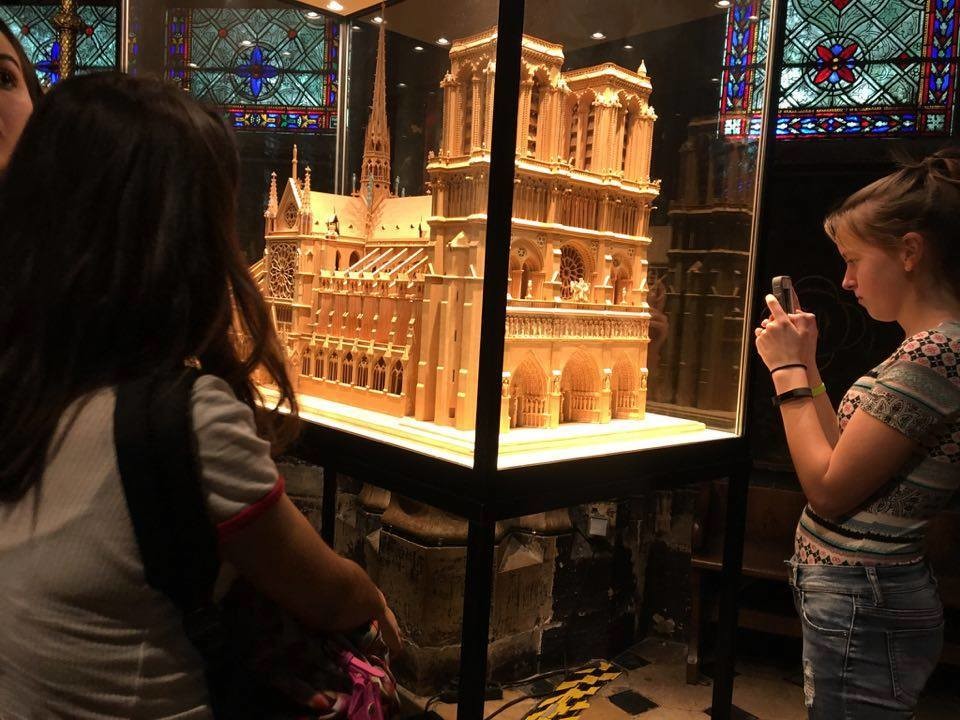
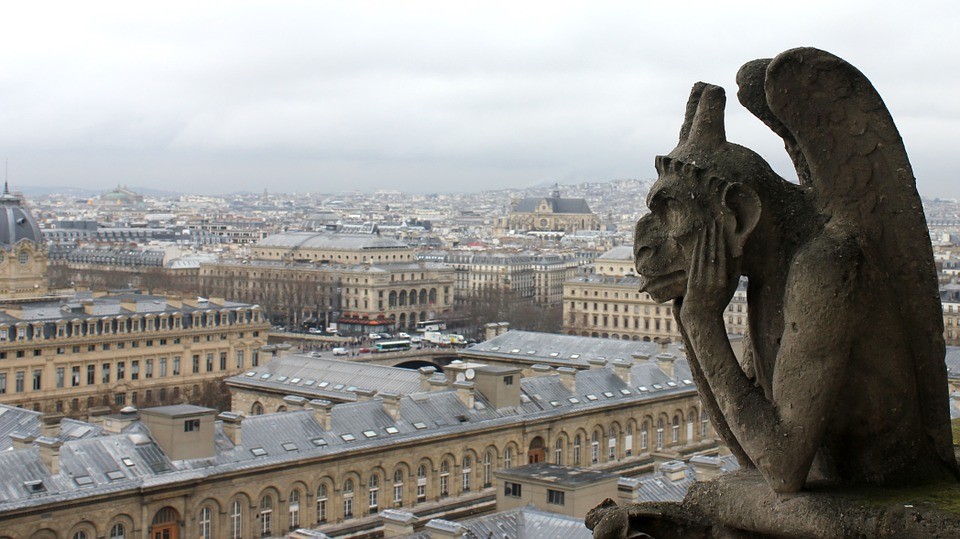
Here where people prayed for centuries, suffered and rejoiced, the cathedral causes special sensations. But nowadays you can’t see that kind of ceremonies. I will recommend you to come here before the evening mass to investigate the cathedral.
Practical information
- The entrance to the Cathedral is free.
- The nearest metro station is Cité.
- Also nearby is the station RER-Saint-Michel-Notre-Dame, which is open daily from 8. 00 to 18. 45, on weekends-until 19. 15, except May 1, December 25, January 1.
- The entrance to the tower from June to August - until 23. 00.
- If you want to visit the tower it is about 8 euros, until 18 years free.
The history of the Cathedral
Under the reign of Louis XIV, one and a half hundred years before the writing of the novel, Notre Dame was seriously injured. Robespierre ordered to behead the statues decorating the cathedral. And just ten years after the publication of the novel, reconstruction began.It was assumed that the cathedral would be so large that it could accommodate all the inhabitants of Paris, which at that time was about ten thousand. Another feature of the construction of the cathedral is that it does not have any internal walls. They are replaced by columns, connected by arches, and the rooms are separated from each other by stained-glass windows.

Notre Dame Cathedral is without a doubt the most famous in Europe. For centuries the Notre Dame Cathedral was the main centre of city life:the emperors were crowned here and the first parliament of France was sitting here, royal weddings and funeral services were held, the rich handed their valuables here, and the beggars sought shelter here. Today it is visited annually by about 13 million tourists.
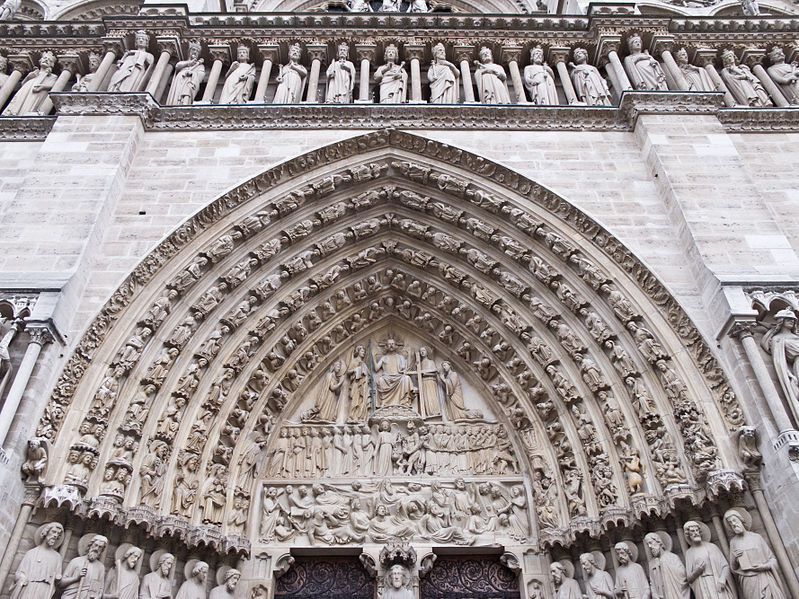
The decoration and interesting facts about the cathedral
The main western facade of the building is divided into three tiers.
- The lower one consists of three portals- the Last Judgement, the Madona and Child, and St. Anne, Mother of the Virgin,
- the middle tier - a gallery of kings with 28 statues of the kings of Judah and Israel and a rose window of the 13th century,
- the upper tier - towers 69 meters high, which was the highest Structure at the time of construction.
The observation deck is the most interesting the look is very impressive.
Each bell on the towers of Notre Dame has its own name. The oldest of them-Belle (1631), the largest - Emmanuel weighing 13 tons, only his beater weighs 500 kg. But they use it only in special cases. The rest of the bells ring every day at 8. 00 and at 19. 00. The bravest can climb 387 steps to the top of one of the towers.
The decoration of windows of the cathedral is very colourful.In some parts of the temple violet and blue colours prevail, in others-orange or red, which gives an enchanting luxury to the interior. Three round window-roses of the XIII century glow like jewels on the western, northern and southern facade.

For many years, valuable things and gifts used in religious ceremonies-the vestments of bishops, bowls, valuable manuscripts and collections of 268 cameos, and a nail and a piece of the cross on which Jesus was crucified, have accumulated over the years.
Notre Dame Cathedral is an active church where divine services are conducted using modern video effects: the text of prayer in French and English is projected onto a transparent screen and the image of biblical stories is projected. Representation is accompanied by beautiful music of the largest organ of France.
During the time when the cathedral was built tastes and ideas about standards have changed many times. That is why the appearance of the cathedral combines several styles at once. So, with its lower part it is like a romantic church, and at the top there are Gothic notes. This combination is so unique.
Experiencing the periods of ups and downs, Notre Dame still stood and appeared before the eyes of modern Parisians.At the same time he managed to maintain hospitality. The doors of the cathedral are open to parishioners who want to see the restored stained-glass windows, listen to the sounds of the ancient organ, touch the cult Christian relics or attend the service.
Make a wish in this holy cathedral and it will come true!
Photo gallery
Content available in other languages
- Italiano: La leggendaria Cattedrale di Notre-Dame
- Français: La légendaire Notre-Dame de Paris
- Español: La leyenda de Notre Dame de París
Where Quazimodo lives
You may not realize but even if you haven't been to Paris you may know a lot about the city from what you see in movies. Since we are kids, we see the city in the cartoons we watch: Ratatouille and Hugo Cabret are just some of them.
Another classic is Hunchback of Notre Dame, a Disney movie, inspired by a book by the french writer Victor Hugo that tells the story of a crook-back man who lives inside this old church in Paris and works cleaning the place and ringing the bells every hour. He is friends with the gargoyles of the church ceiling and is persecuted by the people who think he is a freak.
Since I watched this movie as a kid I wanted to visit this church. And finally I did - and you shoud too!
History
The church was built in the 12th century and it is one of the oldest cathedral in the world. It is a tribute to Saint Mary, Jesus' mother, that names the church (Notre Dame means Our Lady in french).

The church's history though, starts before its construction. When the celtics used to have a religious centre in the same location as Notre Dame, and years later the romans built a church there in the 5th century. The building was destroyed, so the Church demanded the construction of a new one.
Since then, many royal and religious events started to take place there, such as crownings, royal bapthisms. During the Luis XIV reign, Notre Dame gained luxurious elements, such as golden altars in the chappels and stained glass, as well as tombs of important noble figures.
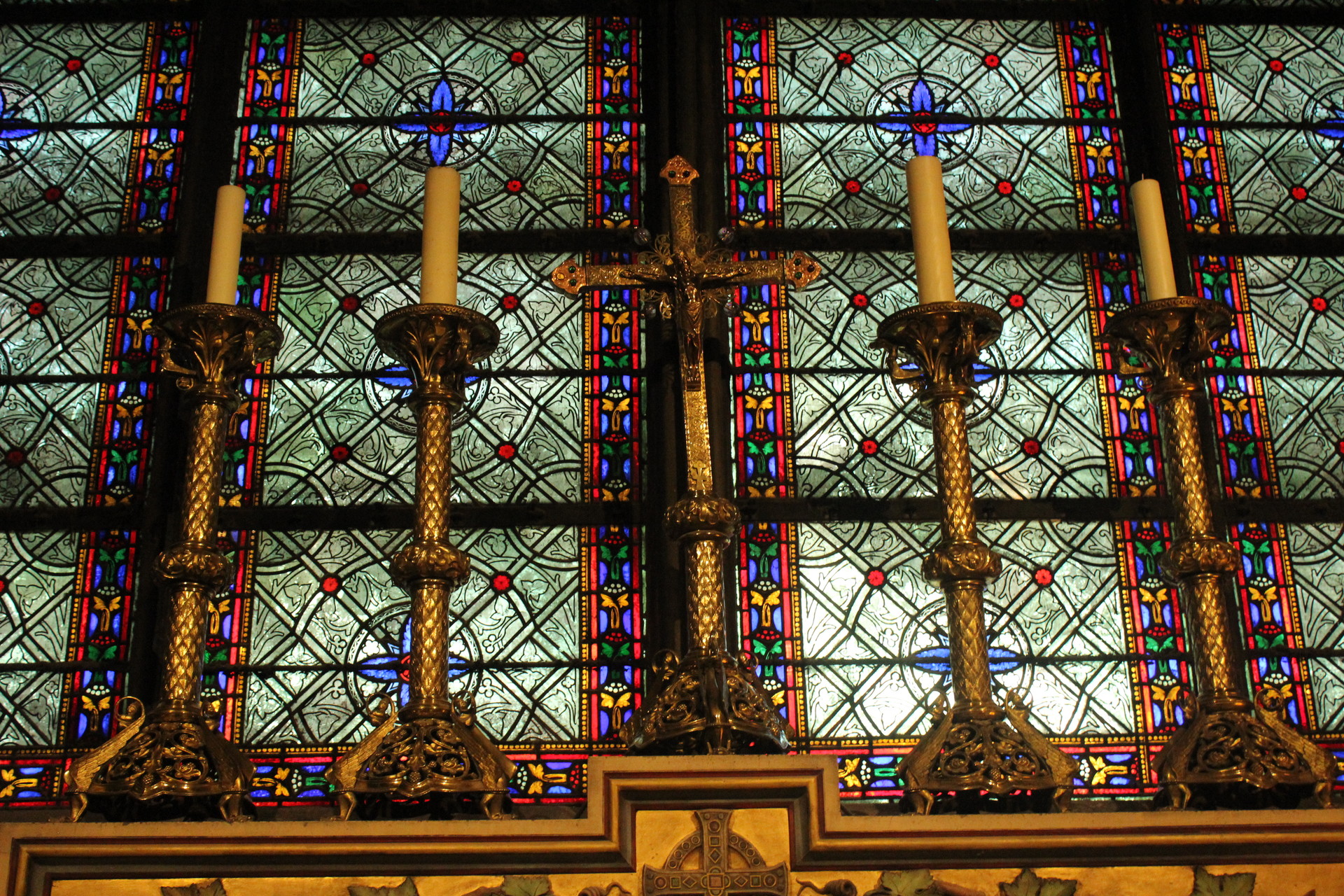
In the French Revolution of the 18th century, many aspects of the church were destroyed as a way to deny the Absolutist regime that mixed religion with politics. The place became a food stock during the time of crisis.
Nowadays, the church is restored, and is again a place of religous cult (but not political). It is also open for visitations.
Architecture
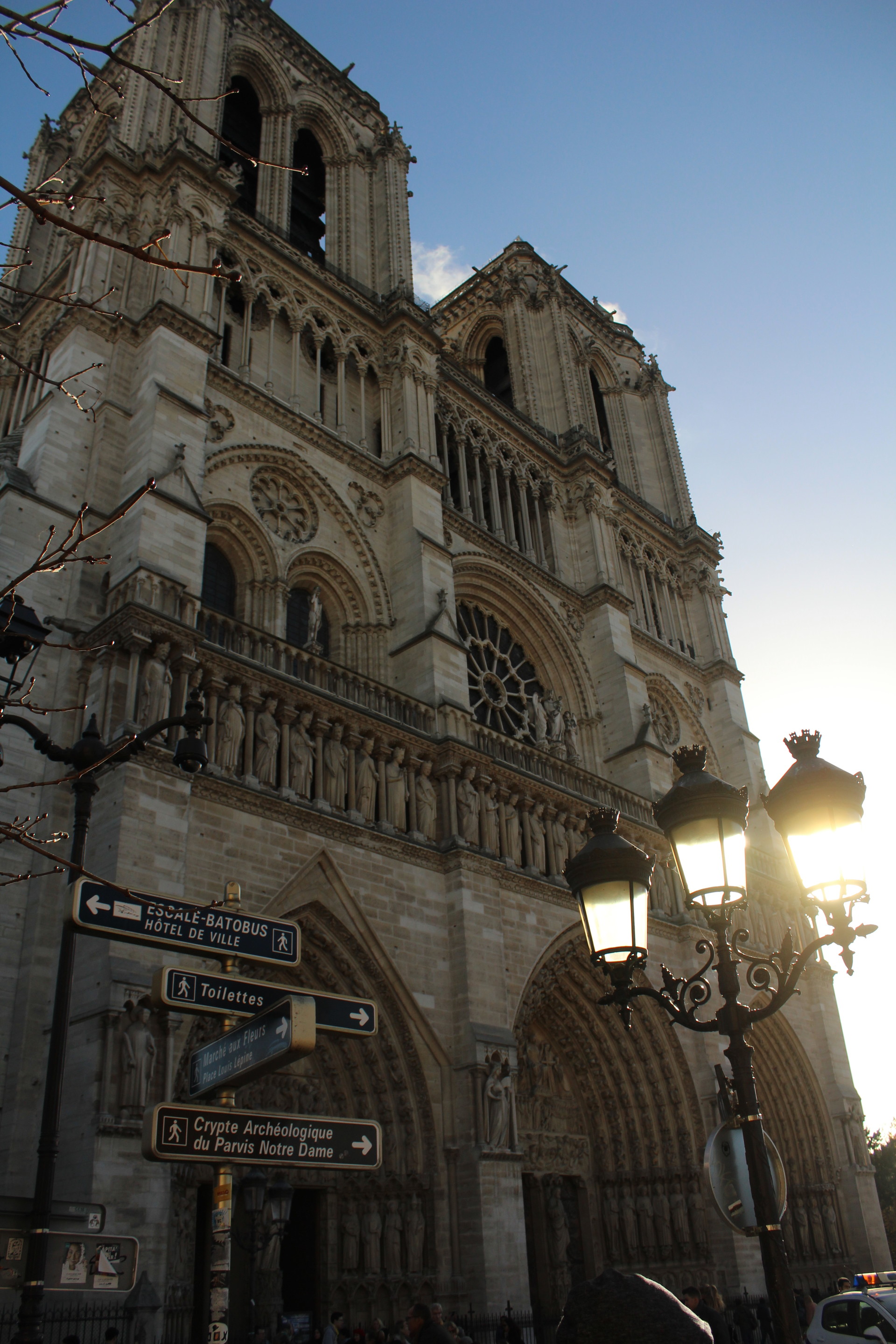
Notre Dame represents the gothic style in architecture. With two main towers, gargoyles on the top, statues of the apostiles and other details sculped in rock, it's really impressive. The back of the church has other pointy towers and columnes. Also, the windows have very detailed frames, with triangular shapes.
Inside the church, there are many columnes and stained glass windows, that make the environment very sumptuous. Over 12 chappels surround the main altar, that is in the center of the cathedral. All of that illuminated by daylight and candle holders (with eletric candles nowadays). You will feel like in the Middle Age.
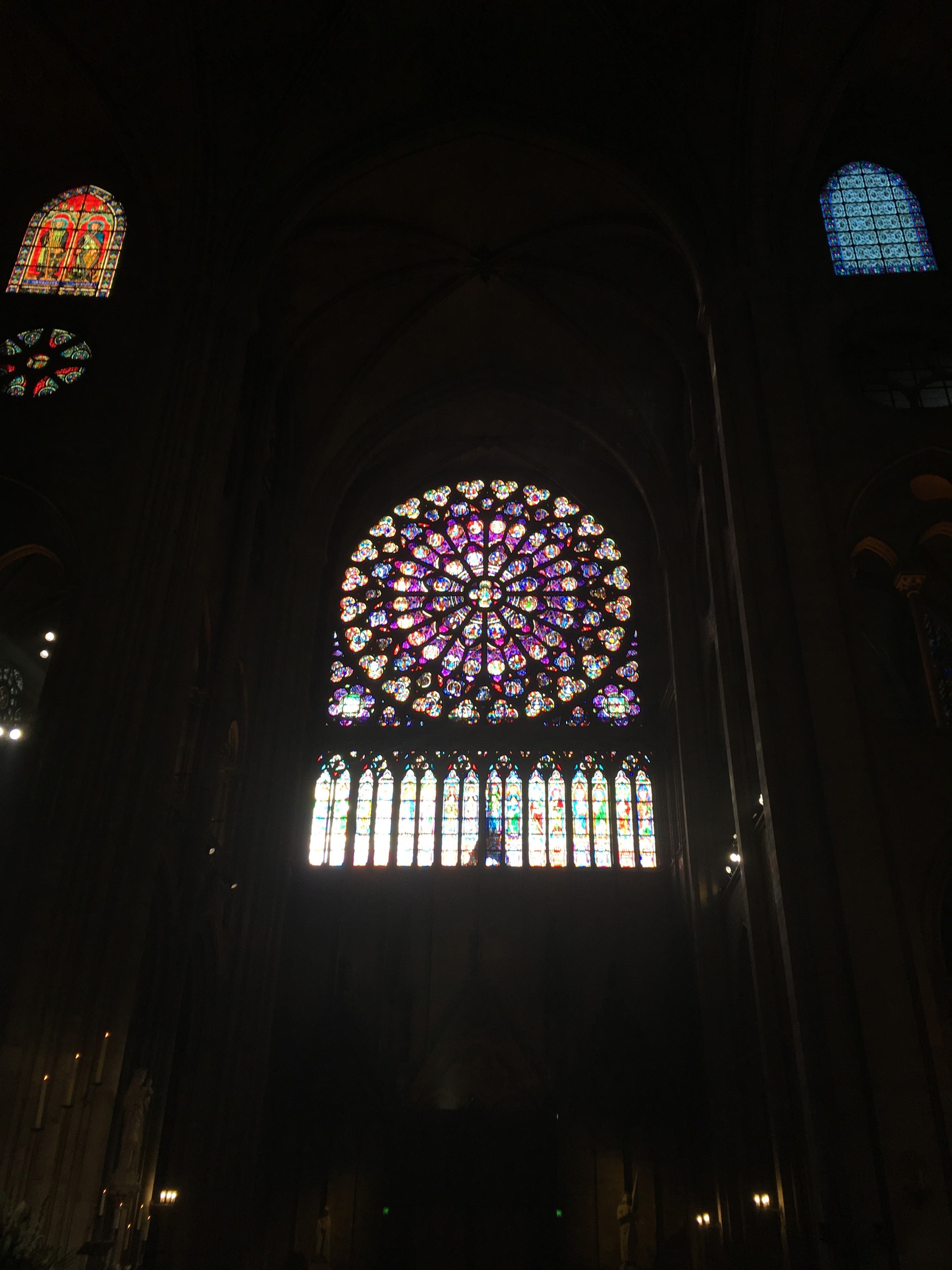

Visitations
The cathedral is open everyday and the entrance is free. You will be able to visit the whole church, every chapel inside it, and if you're lucky, you can even watch a ceremony. Inside it there is a small museum that tells the history of the church, since before the construction, to every restauration it has gone through (that how I learned all things I wrote here). Really interesting.
Also inside, there are many beautiful statues, sculptures and stained glass windows that makes it feel like an art museum.
You can also go up to the church's towers and ceiling, from where you can see the whole city and the gargoyes really close. For this visit you have to buy tickets (11 euros) and probably face a big line and after that a lot of stairs. So be prepared.
I didn't climb to the top because I had gone to other places with panoramic views of the city during my time in Paris - such as Arc de Triomphe and Centre Pompidou. Also, the line was really big and I had many things to do, but people say it is really beautiful up there.
Location
Notre Dame is located in Île de France, an island in the middle of the Seine river, just a bridge away from Marais neighbourhood. It is the very center of France, since the zero mark (where all roads meet) is just in front of it.

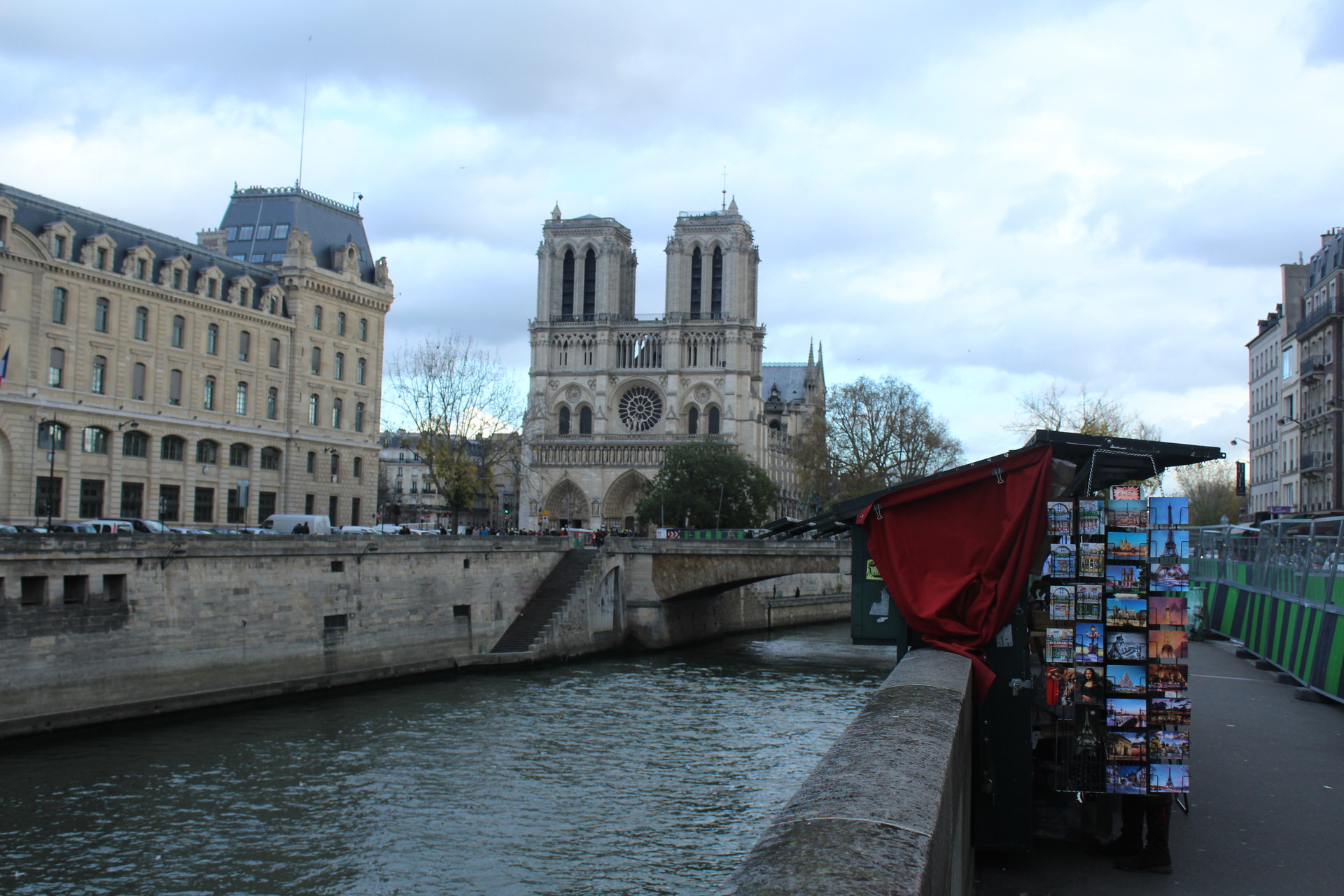
You can get there by train or subway. The closest station is Saint-Michel Notre Dame (line 4, RER C and RER B).
Once you're there, you should also visit Sainte Chapelle, Pont Neuf and Shakespeare and Company book store. Those are other very cool attractions near Notre Dame. Don't miss it!
Photo gallery
Content available in other languages
- Français: La maison de Quasimodo
- Español: Donde vive Quasimodo
Rate and comment about this place!
Do you know Notre-Dame de Paris? Share your opinion about this place.















